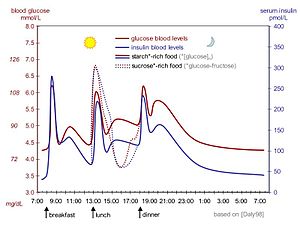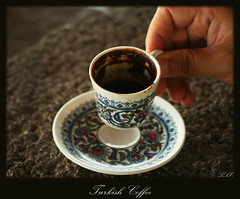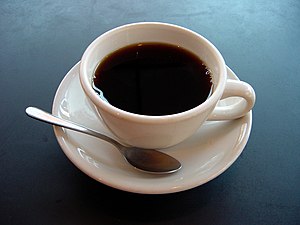It is probably common knowledge that coffee was discovered in Ethiopia. The red cherries which the sheep ate and become very active were taken home and tasted and what was known as the devil’s fruit become coffee as the world knows it today. However, this is just one of the stories which revolve around the history of coffee. Another tale which has been around for some time involves an Arabian who use coffee beans to survive an exile and was discovered near the town of Mocha and thus we also refer to coffee as Mocha. As you will read on, there are more to these interesting coffee facts. [Read more…] about Coffee Facts A Brief History In Time
Coffee Facts
Image by Elvis John Ferrao via Flickr
A good cup of coffee is like fine wine and good quality cigars. There are various different types of coffee beans and these determine the flavors that the blend presents for the coffee connoisseur.
Many coffee makers blend a combination of the lower cost Robusta beans with the more expensive Arabica gourmet beans. The Arabica beans have a finer aroma, a richer flavor and more body than the less expensive beans.
The quality of the coffee is dependant on the proportions of the mix of these beans. Quite often a coffee might be advertised as a blend of gourmet beans and lower grade beans when in fact there are only small traces of the gourmet beans in the blend.
The gourmet beans gain much of their flavor from the soils they are grown in, with the best beans coming from the volcanic regions where the rich soils produce the best tasting beans. [Read more…] about Coffee Facts
Can Coffee Reduce The Risk Of Diabetes?

Can Coffee Reduce The Risk Of Diabetes?
Diabetes is a disease in which the body does not produce or properly use insulin. Insulin is a hormone that is needed to convert sugar, starches and other food into energy needed for daily life. The cause of diabetes continues to be a mystery, although both genetics and environmental factors such as obesity and lack of exercise appear to play roles.
Coffee reduces risk of diabetes
Research suggests that people who drink coffee are less likely to get type 2 diabetes. It isn’t known whether the caffeine or some other ingredient in coffee is responsible for its protective effects.
The researchers wanted to see whether there is a link between diabetes and drinking coffee and green, black, and oolong tea. Participants completed a detailed questionnaire about their health, lifestyle habits, and how much coffee and tea they drank. The questionnaire was repeated at the end of the 5-year follow-up period. [Read more…] about Can Coffee Reduce The Risk Of Diabetes?
Caffeine Benefits – Does It Boost Memory?

Caffeine Benefits – Does It Boost Memory?
Caffeine, like chocolate, often receives bad publicity. Whilst in some instances, and in excess, these can have negative effects on our body, they can also be quite beneficial.
I am not disputing that some people are more sensitive to the negative effects of either caffeine or chocolate. For example, excess caffeine can create anxiety, nausea (particularly if taken on an empty stomach), an increase in heart rate, and even depression in some people. And chocolate is certainly not something that should form the mainstay of one’s diet. If struggling with sugar addiction, or wanting to lose weight, there are more nutritionally complete foods that are available.
But scientists have turned up some interesting facts on caffeine. For example, caffeine actually blocks the effects of a neurotransmitter in the brain (adenosine) that otherwise makes us feel tired. This is why it works so well to keep us awake. It also encourages the release of another brain chemical, dopamine (as well as adrenaline). Dopamine contributes to a feeling of well being. [Read more…] about Caffeine Benefits – Does It Boost Memory?
A Brief Overview of Gourmet Coffee
Image by Getty Images via Daylife
A Brief Overview of Gourmet Coffee
The word Gourmet is used to refer to the fancier grade, cut, or quality of many of the foods and beverages we consume. Gourmet foods and drinks have long been associated as the regular fare for the rich and famous who can afford the higher pricing that often accompanies many of these finer food and beverage versions. Coffee is a beverage that has been available in cheap, regular and gourmet versions for a long time and the consumption rate of coffee among people from around the world continues to increase every year. Gourmet coffee may have once only been served in the finest dining establishments and found being served mostly in the homes of the upper class, but gourmet coffee is widely available and affordable to a variety of people and is found in a variety of settings today.
Coffee is made from coffee beans which are found within the berries that develop and ripen on a number of smaller evergreen bush plant species known as the Coffea plant. After ripening, coffee berries are harvested, and then undergo a processing which also includes drying them. It is the coffee beans that remain after the processing and drying of the coffee berries. The beans are then roasted to various degrees which cause them to change physically and in the tastes they produce. Finally, the coffee beans are grinded down into a fine consistency that is commonly known as coffee grounds, and packaged and shipped to destinations around the world where consumers can buy and brew coffee grounds to make coffee in commercial, hospitality, institutional, and residential settings. Some people prefer to grind their own coffee beans before brewing them for coffee. Packaged coffee beans that have not been ground can be purchased in stores and ground using the grinding mills that are made available in most of the stores selling them, but also with grinding machines in the home. [Read more…] about A Brief Overview of Gourmet Coffee
A Brief History of Espresso

A Brief History of Espresso
Luigi Bezzera, the owner of a manufacturing business invented Espresso at the turn of the century. Luigi Bezzera was simply trying to figure out a way to brew coffee faster. He figured if he could just add pressure to the brewing process it would speed things up. Thus the “Fast Coffee Machine” was created. His idea of a fast cup of coffee turned out much better than he had planned, what he ended up with is a better, fuller tasting cup of strong coffee, as well as a much faster process. He found that the quicker more efficient brewing method allowed for the quality of the beans to be extracted as opposed to over extracting he had previously experienced. The term “Espresso” means fast in italian, hence the term.
It wasn’t until later when Desidero Pavoni purchased the rights from Mr. Bezzera for the espresso machine that it became popular. Pavoni was extremely successful in marketing the product and probably changed the way people drink coffee from then on. Just look around! Coffee and Espresso shops are popping up everywhere, even in the U.S. it has become not only popular for the delicious beans, but has given us a new place to socialize. [Read more…] about A Brief History of Espresso
